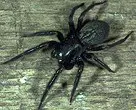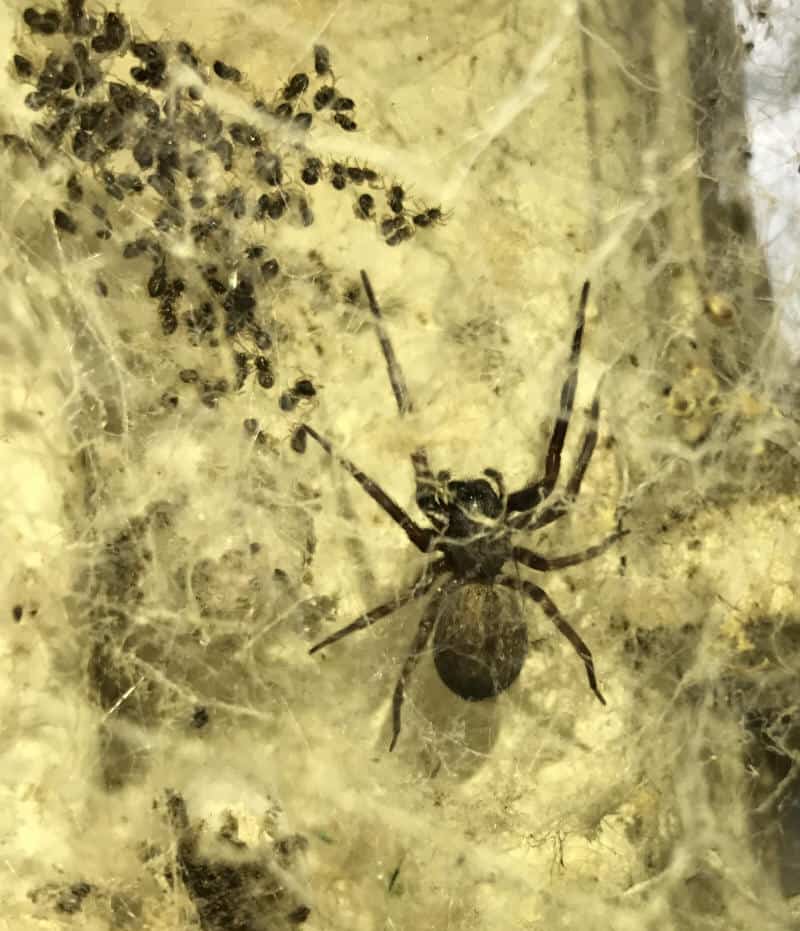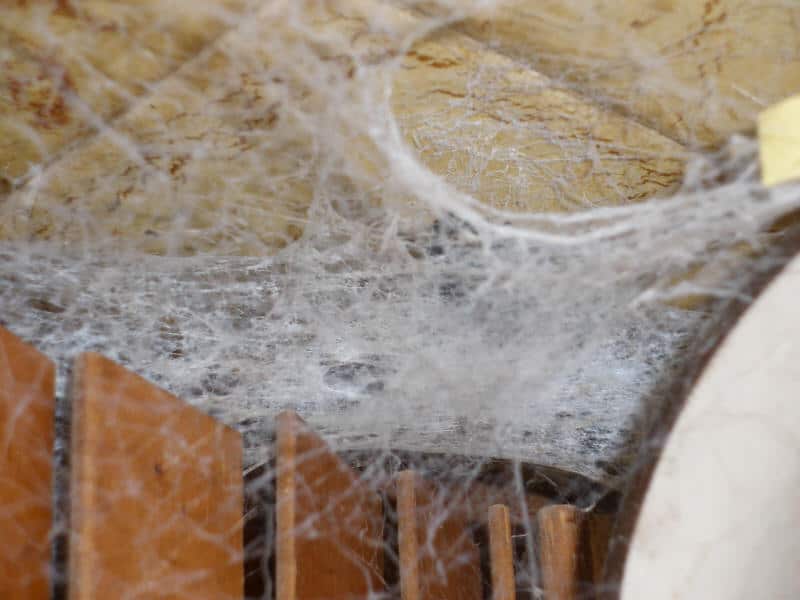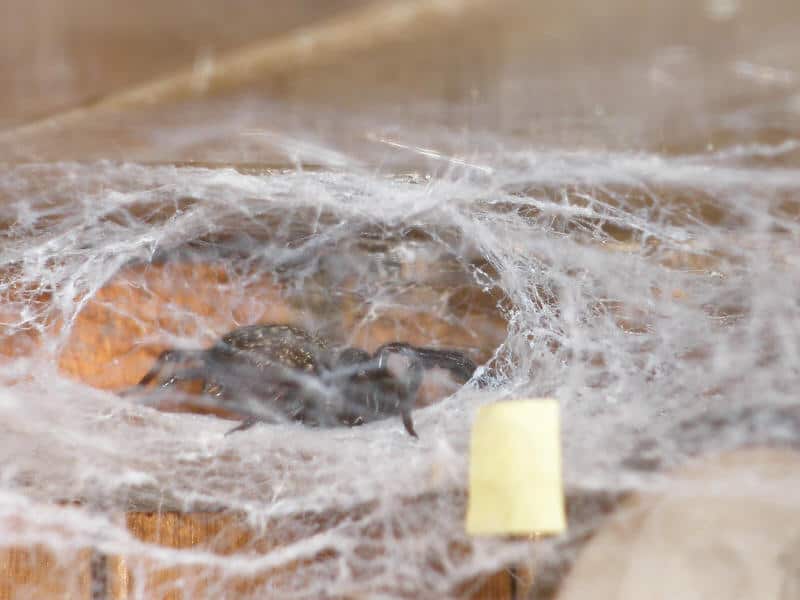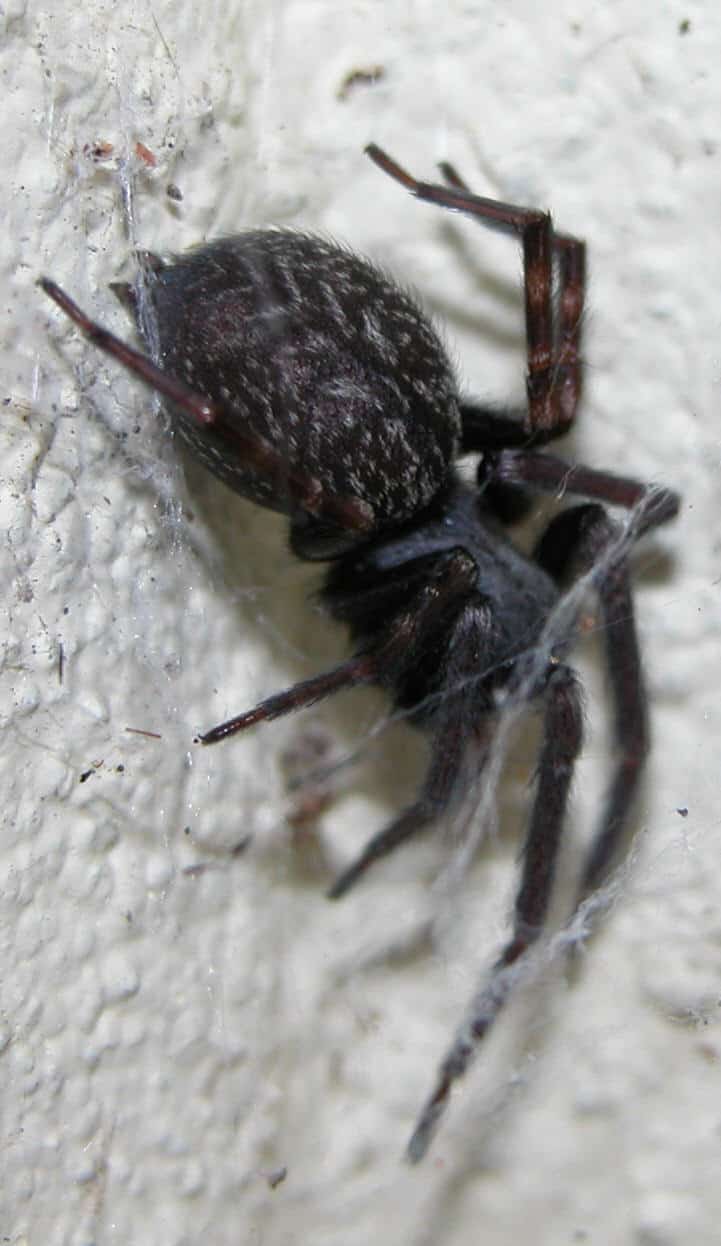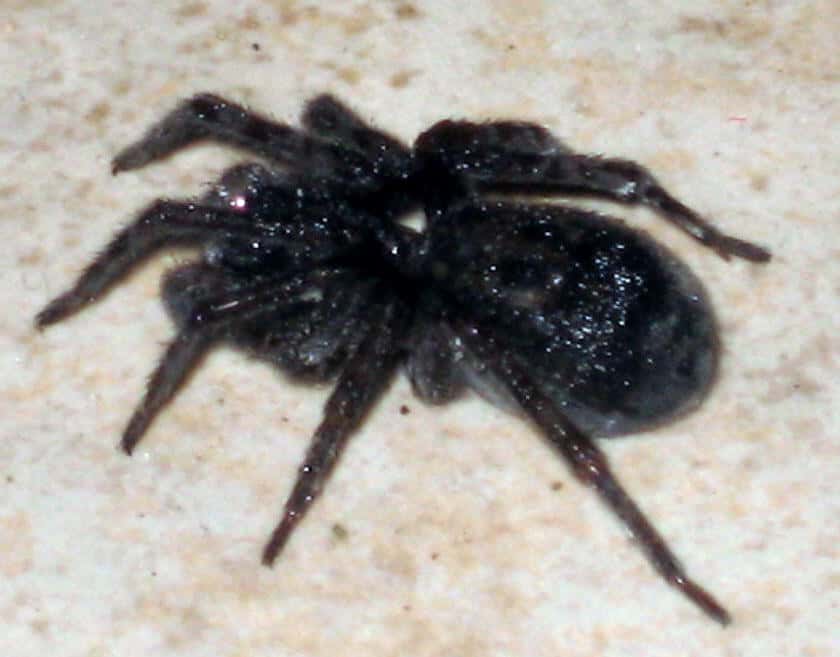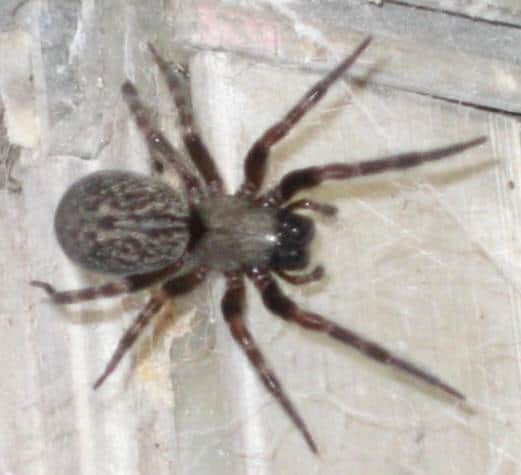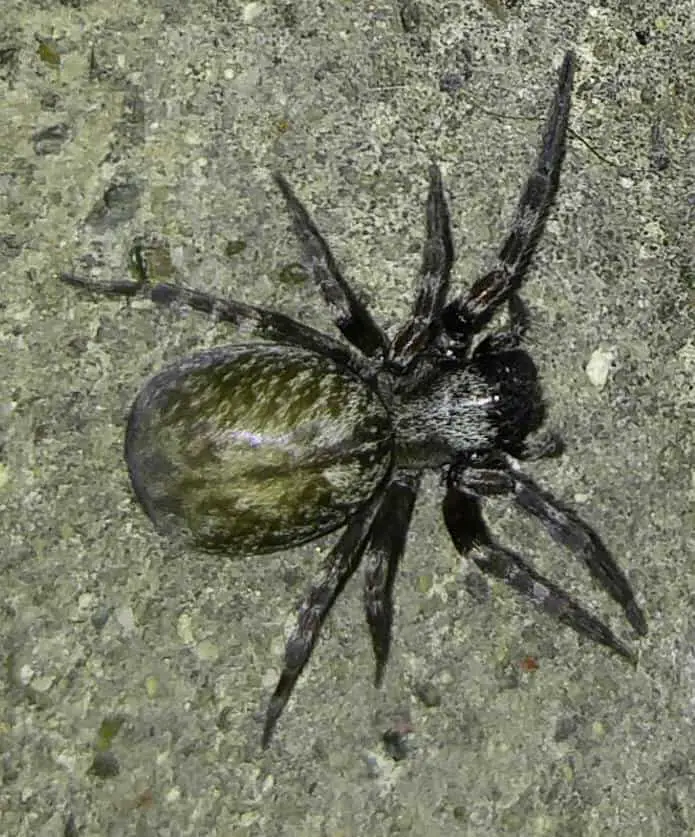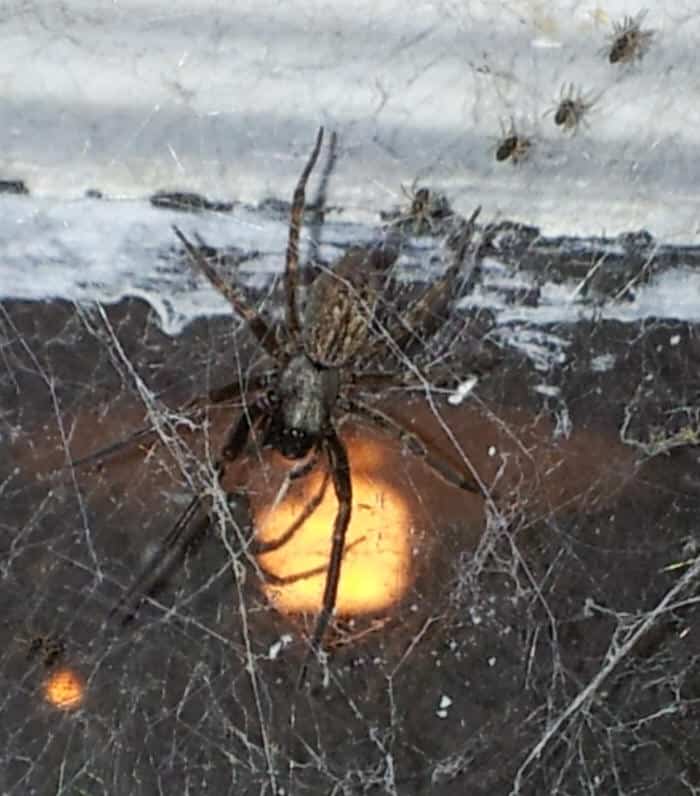Black and Grey House Spiders are widely distributed in southern and eastern Australia and are also found in the United States. Their webs form untidy, lacy silk sheets with funnel-like entrances. Black House Spiders are found on tree trunks, logs, rock walls and buildings (in window frames, wall crevices, etc). Badumna longinquus may be found in similar locations and often builds webs on foliage. The Black House Spider (Badumna insignis) is a dark robust spider, with the female (up to 18mm) being larger than the male (about 9mm). The carapace and legs are dark brown to black, and the abdomen is charcoal grey with a dorsal pattern of white markings (sometimes indistinct). B. longinquus (Grey House Spider) is a slightly smaller (14mm) species with a greyish carapace and grey-brown banded legs. The webs of Black House Spiders have a ‘funnel-like’ shape, which is sometimes misunderstood as a Funnel-web Spider web. However, the two spiders are not at all similar in appearance, size or life history.
See the Funnel-web Spider factsheet to compare the two spiders. The retreat of a true Funnel-web Spider is often less funnel-like and is usually a burrow in the ground. Some funnel webs have burrows in tree-trunk crevices but their web entrances are disguised with detritus (eg, bark) particles embedded in the silk, whereas the silk of Badumna webs is clean. Black House Spiders are timid animals and bites from them are infrequent. The bite may be quite painful and cause local swelling. Symptoms such as nausea, vomiting, sweating and giddiness are occasionally recorded. In a few cases skin lesions (Necrotising Arachnidism) have developed after multiple bites. A cold pack may relieve local pain. Seek medical attention if symptoms persist.

